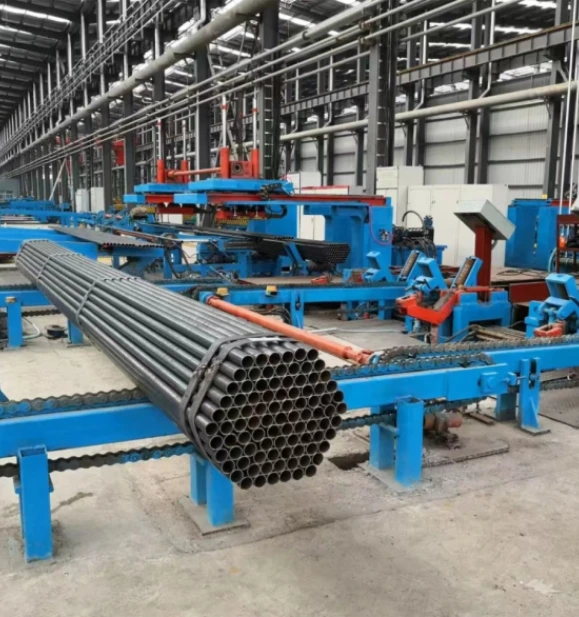Hydraulic Plate Cutting Machinery for Precision and Efficiency in Metal Fabrication
Hydraulic Plate Cutting Machines Revolutionizing Metal Fabrication
In the realm of metal fabrication, efficiency and precision are paramount. Among the various tools and machines used in this field, hydraulic plate cutting machines have emerged as a vital component, transforming the way industries approach cutting large sheets of metal. This article delves into the functionality, advantages, and applications of hydraulic plate cutting machines, highlighting their significance in modern manufacturing.
Understanding Hydraulic Plate Cutting Machines
Hydraulic plate cutting machines utilize hydraulic pressure to drive blades that slice through metal plates. This technology harnesses the power of hydraulics, which allows for smooth and controlled cutting of thick materials, ensuring high accuracy and minimal waste. Typically employed in industries dealing with steel, aluminum, and other metals, these machines can handle various plate dimensions and thicknesses, making them versatile tools in any fabrication shop.
The core mechanism involves a hydraulic cylinder, which generates force to move the cutting blades. The pressure is adjustable, enabling operators to fine-tune the force applied based on the material being cut. This adaptability is crucial, as different metals have varying hardness levels and cutting requirements.
Advantages of Hydraulic Plate Cutting Machines
One of the primary advantages of hydraulic plate cutting machines is their efficiency. The hydraulic system allows for faster operation compared to manual or mechanical cutting methods. Coupled with automation, these machines can process multiple plates simultaneously, significantly reducing production time. This efficiency contributes to lower operational costs and helps businesses meet tight deadlines.
Precision is another critical benefit. Hydraulic cutting offers consistent results with minimal deviations, ensuring that each cut is exact. This accuracy is essential in industries where tight tolerances are crucial, such as aerospace, automotive, and construction. With features like digital readouts and programmable settings, operators can achieve repeatable cuts without the risk of human error.
hydraulic plate cutting machine

Moreover, the hydraulic system minimizes the physical strain on operators. Manual cutting is not only labor-intensive but also poses risks of injury due to fatigue. Hydraulic machines eliminate much of this strain, allowing workers to focus on monitoring the process rather than exerting physical force.
Applications of Hydraulic Plate Cutting Machines
The applications of hydraulic plate cutting machines span numerous industries. In construction, they are used to cut steel plates for beams, columns, and other structural components. The automotive industry relies on these machines to produce parts and frames with tight specifications, where precision is non-negotiable.
Additionally, manufacturing plants utilize hydraulic plate cutters for producing various products, including furniture, appliances, and machinery components. The shipbuilding industry also benefits from these machines when fabricating parts for vessels, ensuring durability and strength in harsh marine environments.
Conclusion
Hydraulic plate cutting machines have undoubtedly revolutionized metal fabrication. Their efficiency, precision, and versatility make them indispensable tools in various industrial applications. As technology continues to evolve, we can expect these machines to become even more advanced, incorporating features such as real-time monitoring, enhanced safety protocols, and eco-friendly operations.
Investing in hydraulic plate cutting machinery not only enhances productivity but also positions businesses to adapt to the ever-changing demands of the market. As industries strive for excellence, the role of hydraulic technology in plate cutting will continue to be a driving force in achieving high-quality results with reduced waste and increased efficiency. Thus, for any business involved in metal fabrication, embracing hydraulic plate cutting machines is not just an option; it is a pathway to sustaining competitiveness in an increasingly demanding landscape.
-
High Frequency Straight Seam Welded Pipe Production Line-BzZhou Xinghua Machinery Equipment Manufacturing Co., LTD.|line pipe steel&welded gas pipeNewsJul.30,2025
-
High Frequency Straight Seam Welded Pipe Production Line-BzZhou Xinghua Machinery Equipment Manufacturing Co., LTD.|High Precision&Automated SolutionsNewsJul.30,2025
-
High Frequency Straight Seam Welded Pipe Production Line - BzZhou Xinghua Machinery Equipment Manufacturing Co., Ltd.NewsJul.30,2025
-
High Frequency Straight Seam Welded Pipe Production Line-BzZhou Xinghua Machinery Equipment Manufacturing Co., LTD.|Precision Welding, High EfficiencyNewsJul.30,2025
-
High Frequency Straight Seam Welded Pipe Production Line|BzZhou Xinghua|Precision Welding&EfficiencyNewsJul.30,2025
-
High Frequency Straight Seam Welded Pipe Production Line - BzZhou Xinghua|Precision Engineering&EfficiencyNewsJul.30,2025


